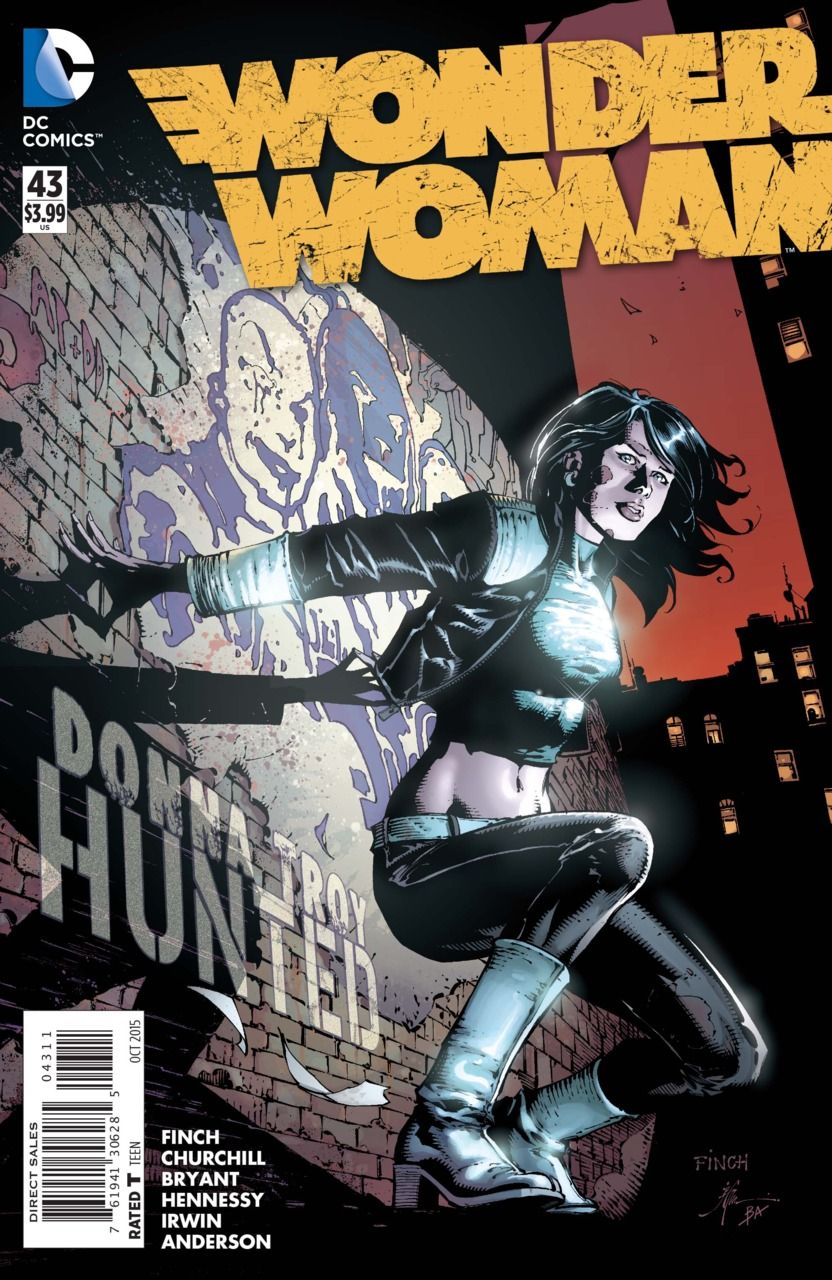Meredith Finch and Ian Churchill's "Wonder Woman" #43 splits time between Diana and Donna Troy as the former tries to locate the latter. A trio of inkers -- Rick Bryant, Andrew Hennessy and Mark Irwin -- are on hand as well, bringing colorist Brad Anderson and letterer Rob Leigh along with them.
From the very first page, however, nothing shines about this book. Every one of the creators does serviceable work, and some of the panels are better than serviceable, but the title of this chapter -- the vertical panel nearly contained in Hera's gown and the excessively convenient over-the-shoulder, heads-turned in surprise reaction from Wonder Woman, Zola and Hera -- all compete for readers' attention, though none of these things keeps it.
Strife shows up to make a flip remark (again, convenient) and the story starts moving forward as Diana sets out to find Donna Troy. The trail brings in Milan from earlier issues of this series, but even his insight (again conveniently triggered for the tale) cannot connect the two raven-haired warrior women. A few steps ahead of Wonder Woman, Donna finds herself in the company of the Fates, the three women of legend who draw out, measure and manage the length of lives through metaphorical twine.
Unfortunately, Churchill "sexes" up the Fates, putting one of them in a bustier and another in tight leather pants. He then goes counter to the sexier appearance by adding in all sorts of wrinkle-representative dashes and lines. The women could have been portrayed in a more reserved manner and still been attractive, but -- instead Churchill -- cuts all of the women in "Wonder Woman" #43 from the same shapely cloth. Wonder Woman and Donna Troy are in fit fighting form, but the Fates could easily be related to those two, based on body shape and facial features. Clean, but extremely fussy artwork with ostentatious bits of lines all overrun the storytelling and character definition, making making "Wonder Woman" #43 only serviceable.
Diana is drawn into the scene with little concern for the setting despite the glowing golden thread but, when she discovers one of the Fates and calls her by name, it undermines the convenience of "This is the last place on my list," as set forth in the script. The imagery continues an underwhelming trend throughout "Wonder Woman" #43, as the Fates use scissors "made of gold" that appear to be more like dull hedge clippers. It works for the rhyme, but the visual becomes distracting and derailing, especially when Anderson colors the handled blades not gold but a nebulous muddy beige, similar to everything else in the room. Anderson's work has moments of shine, like Diana flying though the skies or Aegeus entering the issue, but more often than not Anderson's colors , like Churchill's art, are not as special as it could be.
Churchill, Anderson and Leigh are all capable of work that shines brighter than what is presented in "Wonder Woman" #43. This issue simply feels rushed, uneven and confusing with items of convenience that pop into the story. I see what Finch and crew are trying to do, but it's not coming together, at least not yet. There are bits of the original direction of this series coming in, emphasizing the dynamic and pace of the world around Diana, but there just isn't enough appeal or pizzazz in "Wonder Woman" #43 to make it a memorable tale.

